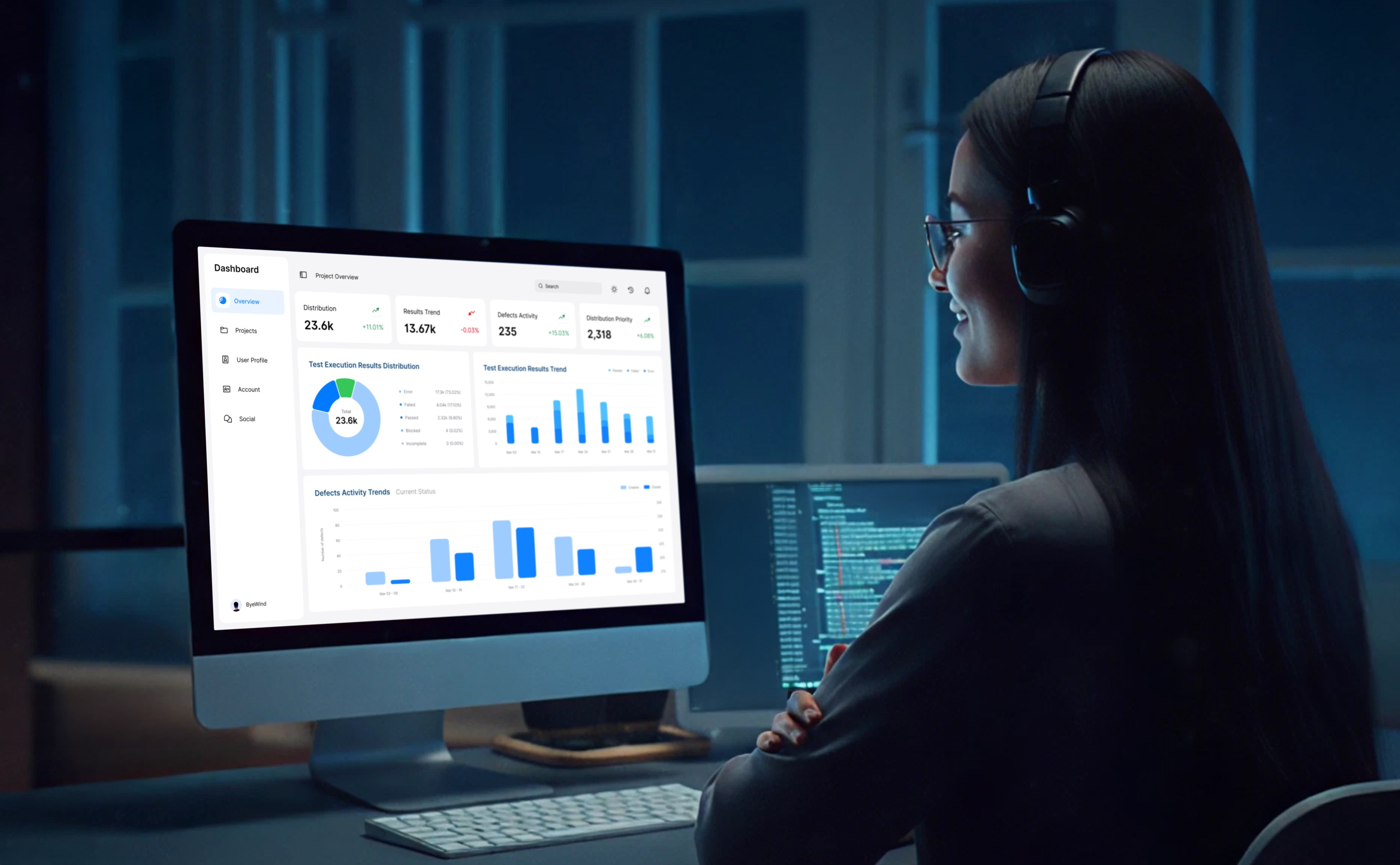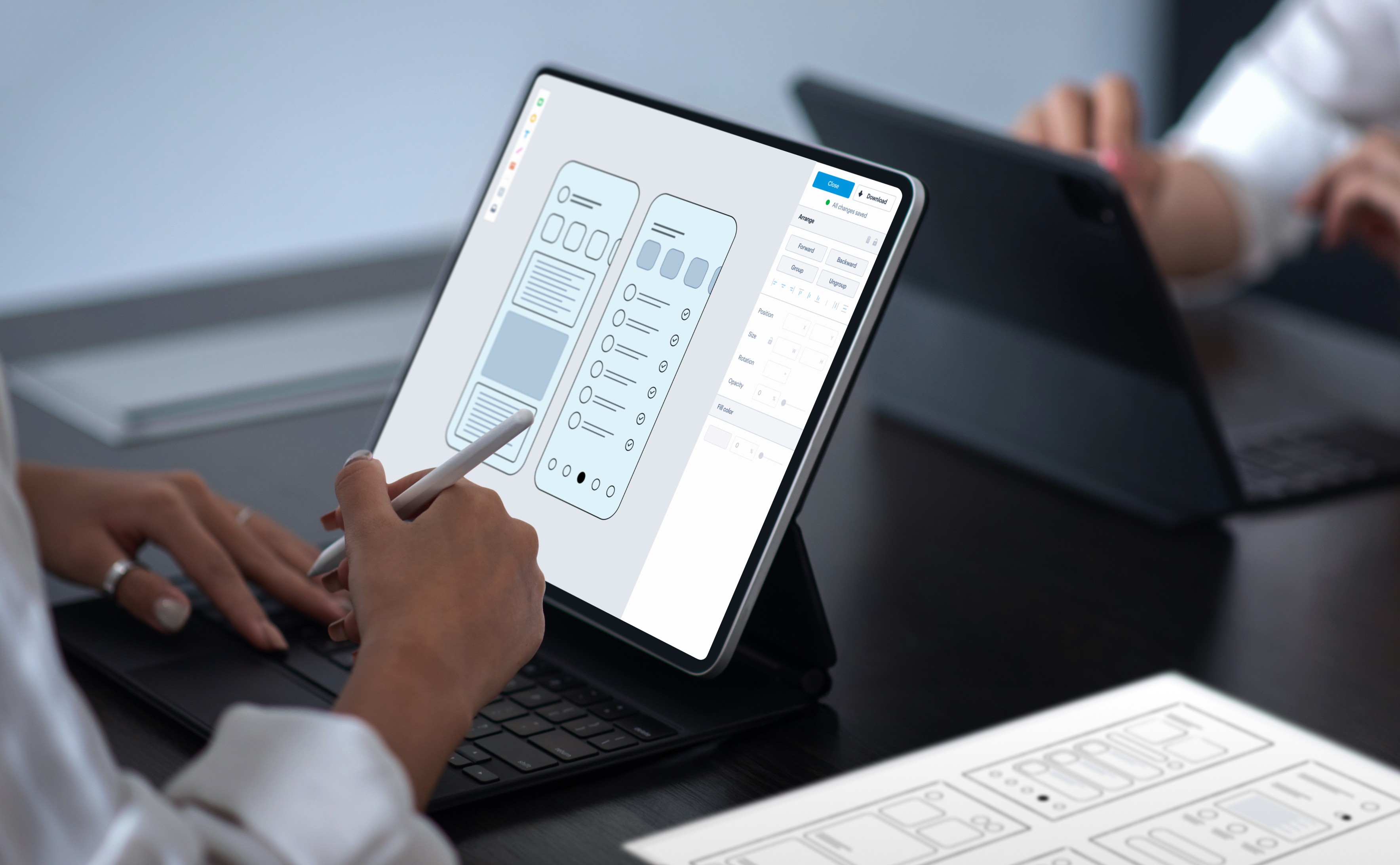Top Reasons Why You Should Use Laravel in 2025

In 2025, creating secure, scalable, and high-performing web applications is essential for digital success. Among the many technologies available, Laravel continues to dominate as the leading PHP framework. If you are asking yourself why Laravel framework in 2025, well, here is the reason! The hype about Laravel is not just a buzz—fresh figures have indicated that as of 2025, Laravel has over 2.5 million sites running on it; its speed doesn't seem like slowing down anytime soon. It has become one of the most preferred PHP frameworks, and it’s easy to see why! The vibrant community and rich ecosystem of Laravel make it ahead of the pack. This framework strikes a perfect balance between elegance, functionality, and flexibility, making it an excellent option for companies eager to innovate and grow. In this article, we'll talk about what Laravel is used for, why use Laravel for web development and why it's still popular in 2025.
What is Laravel?
Laravel is an open-source PHP web application framework that follows the Model-View-Controller (MVC) pattern. Both novice and seasoned developers find it to be a great option due to its easy setup process and extensive beginner packages. While it's mainly a back-end framework, Laravel can also be used for full-stack development in PHP. You can create front-end systems using React or Vue and build powerful back-end APIs.
Its characteristics are otherwise shared by many other PHP frameworks, such as CodeIgniter and Yii, and even draws inspiration from tools like Ruby on Rails. These built-in tools help speed up the development process and reduce the need to start from scratch.
Evolution of Laravel
Since its release, Laravel has evolved with many updates that have enhanced performance, security, and the developer experience. With Laravel 10, the framework enabled batch tasks, enhanced query builders, and offered native support for route attributes. Laravel 11 is planned to be the best yet, with even better real-time tools and DevOps integrations.
Top Companies Using Laravel
Laravel powers the backends of numerous well-known companies and platforms. According to BuiltWith, some of the top companies using Laravel include:
- 9GAG
- Invoice Ninja
- Alison
- Barchart
- WatchSeries
These examples showcase Laravel's ability to scale and perform in high-traffic, data-intensive environments.
Laravel vs Other PHP Frameworks
When compared with frameworks like Symfony, CodeIgniter, or Yii:
- Laravel prioritises developer efficiency by incorporating tools like Eloquent ORM and Artisan CLI.
- Despite its corporate focus, Symfony typically requires additional configuration.
- Although CodeIgniter is lightweight, it lacks the ecosystem and built-in features that Laravel offers.
In essence, Laravel strikes a balance between simplicity and power, which is ideal for both startups and enterprises.
Top reasons to use Laravel in 2025
If you're wondering why to use Laravel, here are the top 10 reasons developers and businesses trust it for web application development:
Microservices Architecture for Modular, Scalable Applications
Laravel makes building microservices easier with its event-driven designs (like Laravel Events and Queues), lightweight frameworks (like Lumen), and strong API tools. Teams can create distributed services that communicate asynchronously using message brokers like Apache Kafka or RabbitMQ. This produces horizontally scalable, fault-tolerant systems that can handle changing workloads.
Future-Proof Ecosystem & Thriving Community
Laravel’s ecosystem is continually evolving, with powerful tools such as Forge for server provisioning and deployment, Vapor for serverless infrastructure using AWS, Nova for admin panels, and Envoyer for zero-downtime deployment. With regular updates, documentation, and a lively international community, Laravel keeps its developers up to date on modern development standards and helps them build scalable, enterprise-level apps.
API-First Architecture for Omnichannel Platforms
Laravel makes API-first development easier with features such as Resource Controllers, rate limiting, and token-based authentication with Sanctum or Passport. All these tools help integrate Laravel easily with mobile apps, IoT, and JavaScript frontends. Built-in API Resource Transformers provide consistent and clean JSON responses on every platform.
Progressive Web App (PWA) Enablement
Laravel works smoothly with service workers, Laravel Mix, and frontend tools like Vue.js or Inertia.js to support Progressive Web Apps. For today's mobile-focused users, this enables developers to create web apps that load quickly, function offline, and feel like native mobile apps.
Development Speed & Operational Cost Reduction
Owing to Laravel's simple syntax, Eloquent ORM, Blade templates, and the Artisan command-line tool, development speed is significantly increased. With tools like Laravel Livewire, developers can use PHP alone to construct full-stack functionality. All of this results in quicker development, less time spent fixing bugs, more seamless teamwork, and lower expenses, which in turn leads to earlier project releases and better returns.
High-Performance, Scalable Infrastructure
Laravel is built to handle high-traffic and scale applications. Laravel accommodates performance tools like OPcache, Redis, indexing, and job queues in the background. With Laravel Octane and Swoole, it can handle thousands of requests very quickly and efficiently. For larger projects, Laravel Vapor supports serverless scaling on AWS without requiring one to take care of any servers.
IoT-Ready Framework with MQTT Support
Laravel’s structure makes it great for real-time IoT applications. It can connect with MQTT brokers like Mosquitto to handle live sensor data. With Laravel's Queues and Broadcasting tools, such as Pusher, Redis, or WebSockets, developers may create systems that are responsive and fast. These are perfect for use in logistics, healthcare, and smart homes.
Enterprise-Grade Security Architecture
Laravel comes packed with robust security features that keep modern applications safe and sound. It effectively guards against threats like SQL injection, XSS, and CSRF attacks. On top of that, it offers handy tools like rate limiting, secure password storage, email verification, two-factor authentication, and API throttling. These built-in tools help meet essential security standards such as OWASP and GDPR.
Long-Term Support (LTS) & Backward Compatibility
Laravel's long-term support (LTS) versions, like Laravel 6 and 9, get bug fixes for two years and security updates for three years. They stick to clear versioning rules (SemVer), ensuring that updates won’t disrupt your application. This approach allows companies to grow and adapt smoothly, thanks to reliable features and well-defined guidelines.
Top 12 Features of Laravel
Blade Template Engine
Laravel's integrated template engine, Blade, makes it simple to create reusable, tidy layouts. PHP makes HTML writing easier with its simple loop and condition syntax. Layouts containing sections and components can be reused, which saves resources. Additionally, Blade works well with contemporary frontend tools like Inertia.js, React, and Vue.js.
Artisan Command-Line Interface (CLI)
Artisan is Laravel's command-line tool that makes developers' lives easier. In a few simple commands, you can easily generate files such as controllers, models, and database migrations. It also allows you to execute background tasks, schedule jobs, and define custom commands to automate your process.
Eloquent ORM (Object-Relational Mapper)
Eloquent simplifies database work in Laravel to be easy and neat. Rather than using complicated SQL, you can use simple PHP code to handle your data. It also assists in establishing relationships between data. Eloquent is compatible with databases such as MySQL, PostgreSQL, and SQL Server, and simplifies filtering, sorting, and retrieving data efficiently.
Comprehensive Libraries & Modular Design
Laravel has practical built-in functionalities such as login mechanisms, password authentication, and data encryption. It has a modular structure that allows you to segment your application into manageable modules.
MVC (Model-View-Controller) Architecture
Laravel employs the MVC pattern, which divides the app into three components: Model (data), View (design), and Controller (bridge between the two). This architecture maintains the code clean, structured, and simple to test.
Reverse Routing
Rather than hardcoding URLs, Laravel uses reverse routing to create them based on controller actions or route names. This approach adds flexibility to the system and simplifies URL management, as any changes to a route's URL can be handled directly in the route specification.
Database Seeding
With Laravel database seeding, inserting demo or testing data into your database is simplified. It easily creates proper example data quickly with model factories and the Faker library. It reduces testing and improves development without manual data insertion.
Validation Engine
Laravel contains a simple and flexible validation system that assists in verifying user input. It supports pre-built rules such as required, email, unique, and regex. Developers can also build custom rules or define conditions among fields. Current versions simplify the validation process so that developers use less code but achieve more efficiently.
File Storage & Cloud Integration
Laravel makes it easy to work with files using the Flysystem PHP package. This gives a consistent way of dealing with different storage systems like local storage, Amazon S3, Google Cloud, and Rackspace. Laravel also offers secure file access using signed URLs and storage links so that you can work with and share files securely.
Schema Builder & Migration System
Laravel's migration feature assists in maintaining database changes through easy PHP code. This is convenient for teams to collaborate without encountering conflicts. The Schema Builder allows you to define and modify tables, indexes, and foreign keys via code. Through Artisan commands such as migrate, rollback, and refresh, developers can maintain the database structure consistent and well-organized.
Localization & Internationalization
Laravel makes it simpler to create multilingual applications. You can save translations in simple files and utilise helper functions like trans() or __() to display the appropriate language. Middleware makes it simple to switch between languages based on user preference. Consequently, Laravel is a fantastic option for global or multinational apps.
Strong Testing Suite
Laravel has an integrated testing framework based on PHPUnit, allowing unit tests and feature tests to be executed with ease. It provides simple facilities to simulate user actions, validate business logic, and verify responses. With BrowserKit and Laravel Dusk, developers can also run browser-based tests to ensure the app performs smoothly in real-world use.
Popular Combinations in Laravel
| Combination | Frontend Framework | Backend (Laravel) | Key Features | Ideal For |
|---|---|---|---|---|
| Laravel & Vue.js | Vue.js | Manages backend (database, APIs) | Two-way data binding, real-time features, Laravel Mix for asset management | Single-Page Applications (SPAs), Real-time features like chat or dashboards |
| Laravel & Angular | Angular | Manages backend (databases, user authentication) | Two-way data binding, easy integration, scalability | Data-driven, real-time apps like CRMs, HR systems |
| Laravel & React | React | Manages backend (databases, APIs) | Quick UI updates, seamless integration with Laravel Mix and Webpack, real-time data | Single-Page Applications (SPAs), Real-time data websites |
Laravel and Vue.js
Vue.js is a JavaScript framework that works great with Laravel for building dynamic, real-time apps. Vue.js takes care of the front-end with features like two-way data binding, while Laravel manages the backend, including database tasks and APIs. This combo is perfect for Single-Page Applications (SPAs) and real-time features like chat or dashboards. Laravel Mix makes asset management simple, speeding up development.
Want to build a dynamic, real-time application with Laravel and Vue.js?
Let's talkLoading...
Laravel and Angular
One of the best frameworks for creating large-scale applications is Angular. Laravel manages the backend and everything from databases to user authentication, while Angular manages the front end with capabilities like two-way data binding. This combination provides easy integration and scalability, making it perfect for developing data-driven, real-time apps like CRMs and HR systems.
Laravel and React
React is one of the most widely used libraries for creating interactive user interfaces. When combined with Laravel, it offers the best way to create scalable web apps. With quick UI updates, React manages the front end, while Laravel takes care of the back end, databases, and APIs. Because Laravel Mix and Webpack make integration simple, this powerful combination works especially well with Single-Page Applications (SPAs) and websites that rely on real-time data.
E-Commerce Platforms with Headless Architecture
Laravel has become a go-to choice for creating robust backend systems for e-commerce sites. In 2025, developers are increasingly using Laravel alongside headless CMS platforms like Strapi or Contentful, paired with frontend frameworks such as React or Next.js. This combination allows online shops to offer fast, search engine-optimized, and mobile-friendly shopping experiences. Laravel efficiently handles payment processing, order management, product information, and user accounts through REST or GraphQL APIs.
Want to go headless with Laravel for your online store?
Reach out to usLoading...
Real-World Use Cases of Laravel in 2025
SaaS Applications with Subscription Billing
Laravel is utilized by most software-as-a-service (SaaS) applications for features such as user authentication, subscription billing, API access, and dashboard management. Features such as integrating payment systems like Stripe or Paddle are simplified with tools like Laravel Cashier. Laravel Sanctum and Passport provide secure API access, and it is hence a suitable choice for creating full-fledged SaaS platforms.
Real-Time Dashboards and Admin Panels
Laravel is utilized in creating dynamic real-time dashboards for industries. The live update can be given to consumers effortlessly without the necessity of page reloading using Laravel Broadcasting via WebSockets—utilizing Pusher or Laravel Echo. It provides managers with live statistics, reports, and alerts when used together with Laravel Nova or customized admin panels.
IoT-Based Smart Systems
Laravel is driving industrial and smart home IoT device backend systems. Laravel receives and processes real-time sensor data via MQTT protocol support (through packages such as laravel-mqtt). Data is stored, displayed, or used to trigger automated actions. Laravel Queues help to manage background jobs without lag.
API-First Mobile App Backends
These days, Laravel is a top pick for developers working on mobile app backends. Its API-first setup—featuring things like Resource Controllers, Sanctum for handling authentication, and API Transformers—makes it way easier to connect the backend with Android, iOS, or even Flutter apps without much hassle.
Serverless Applications with Laravel Vapor
Laravel Vapor is being used by both large corporations and startups to launch serverless apps on AWS. This means they can ditch the hassle of managing servers while enjoying impressive scalability. With Vapor, you don't need to worry about things like scaling, handling backups, or managing queues—it does that all for you. This enables developers to concentrate solely on writing code and developing features. Apps that must always be accessible or see unexpected traffic increases will find it especially useful.
Learning Management Systems (LMS)
The education industry is opting for Laravel to create their Learning Management Systems. Dealing with user roles—students, instructors, or administrators—is easy using Laravel. Apart from course content, it has features such as tests, grading, and live chat with Laravel Echo. Also, it's simple to scale with its modular framework.
Content-Heavy Blogs and News Portals
Owing to its support for modern frontend technologies and content APIs, Laravel is a great choice to develop large blogs or news portals. Furthermore, thanks to the Laravel Scheduler, it's easy to automate the posting of articles, refresh the website with constantly updated content feeds, and have everything SEO-optimized to increase visibility. On top of that, Laravel Scout lets you add powerful full-text search across your content without much hassle.
Healthcare Portals with Secure Data Handling
Laravel is the go-to framework for secure patient portal, appointment, and electronic health record development. It has in-built data validation, encryption, authentication, and GDPR/ HIPAA regulatory compliance features, making it the first choice for healthcare apps where privacy and security are the top concern.
Bottom Line
In summary, Laravel remains an influential and resourceful framework in 2025, being applicable to a diverse array of business sectors. The fact that it can effortlessly get along with today's front-end technologies, i.e., Vue.js, Angular, and React, makes it the best for developing dynamic web applications with ease of scalability.
Laravel is a robust and flexible solution to build interactive learning management systems, large-scale enterprise CRMs, secure health systems, customized eCommerce sites, and API-driven apps. The framework is unique in web development with regard to security, flexibility, and support for handling real-time data. This makes it easy for developers to develop secure, user-oriented, and high-performance apps using Laravel development services.
Want to tap into the full power of Laravel through a reputed Laravel development agency? Webandcrafts (WAC) is a Laravel development company with extensive experience, know-how and reach. With its expert team of developers, WAC provides high-quality, scalable Laravel apps that fit your business requirements. If you're looking to accelerate your project, you can also hire Laravel experts or php developers for hire from WAC to seamlessly integrate with your team and bring your vision to life.
Wondering how Laravel can scale your next big project?
Let's talkLoading...
Discover Digital Transformation
Please feel free to share your thoughts and we can discuss it over a cup of tea.










